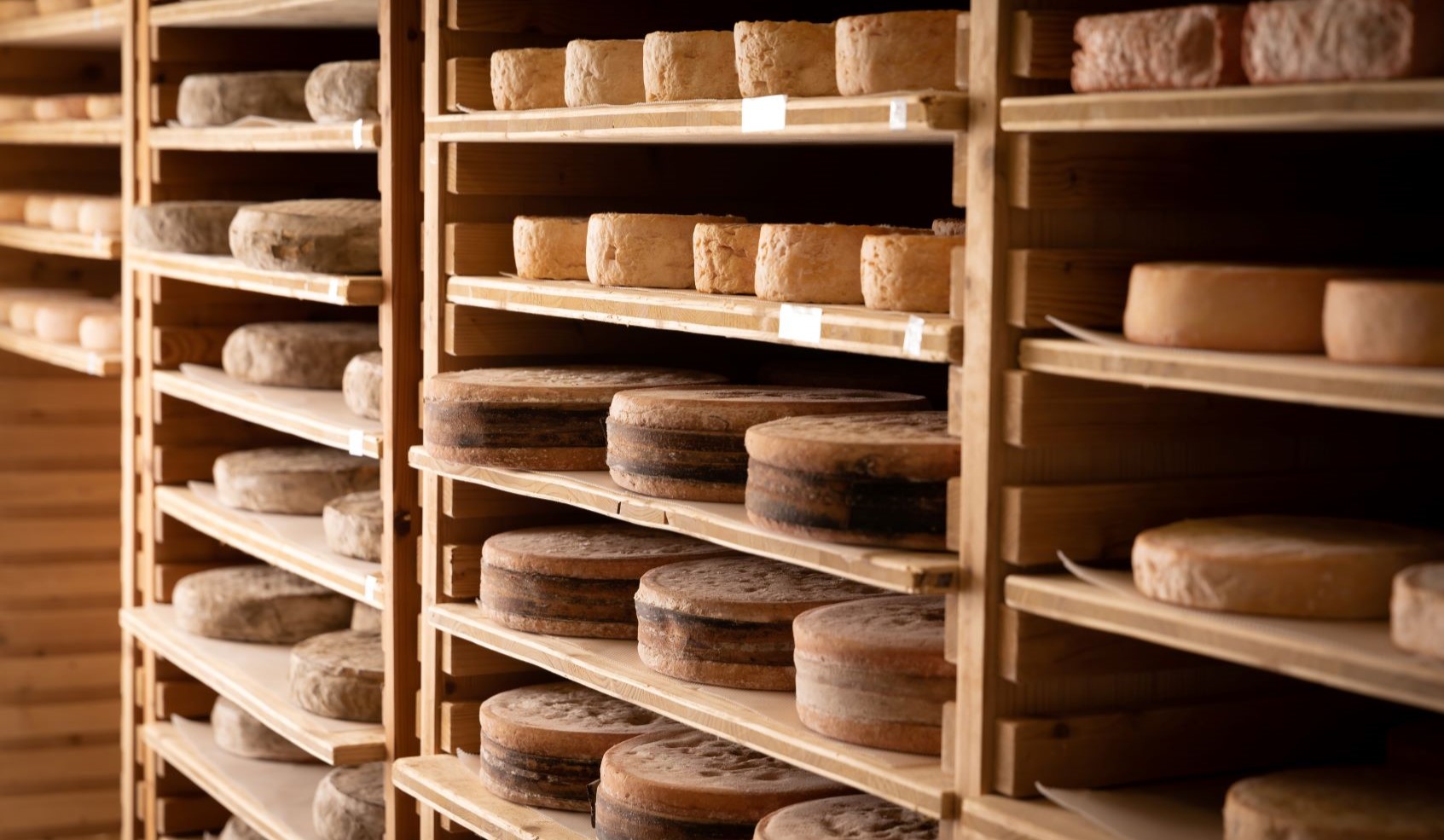
The cellars
Bernard and Jeanine Antony’s enthusiasm for cheese began in 1979 when they met Cheesemaster Pierre Androuët, the leading cheese expert of his time. They created their first ripening cellar in 1983. Today, the business has six ripening cellars, each dedicated to a specific type of cheese. Explore them in pictures.

Cellar for Tommes
All of France’s mountain regions are represented here. These cheeses, which are classified as “semi-cooked pressed”, help to demonstrate the fantastic diversity of the country’s specialities.

Cellar for goat’s and ewe’s cheeses
Goat’s cheeses are fragile and need to be ripened at a low temperature (6°C) with low humidity. This means that they evolve very slowly and demand constant attention.

Cellar for bloomy rind cheeses
Penicillium reigns in this cellar. It is of course the mould that covers this family of cheeses, giving them their characteristic “bloom”. The brick walls regulate humidity levels to ensure that the flora develops in sufficient quantities.

Soft cheese cellar
Different families of natural-rind and washed-rind cheeses ripen in this cellar. Each of the cheeses from these families brings its own contribution to the atmosphere, creating an unusual symbiosis.

Vaulted cellar for pressed cheeses
The slow ripening that began in the production regions is completed here. Some of these cheeses require several years of care and ripening. In this cellar, the cheeses benefit from an atmosphere which honours the skilled work of a whole chain of committed cheese specialists.

Vaulted cellar for soft cheeses
These cheeses require careful handling. They are regularly washed with water to enable the specific fermentation processes that soft cheeses undergo to bring out their distinctive personalities. The vaulted ceiling of the brick cellar is essential to achieving bespoke results.
